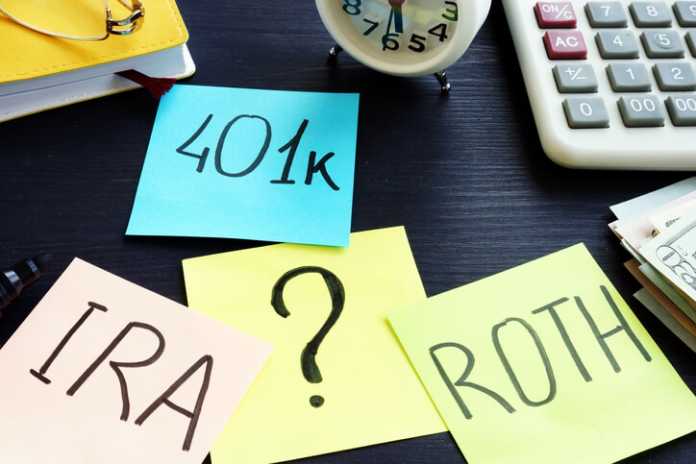Generally, saving for retirement can be crucial to having a financially stable life. It can help ensure that you have sufficient financial resources to enjoy a comfortable life after earning monthly income.
Also, as you grow older, you’ll become more vulnerable to financial issues, health issues, and other life problems. Because of this, you should start saving as early as possible to attain financial security as you retire. Moreover, establishing retirement savings is important for several reasons. For instance, the funds can be used to cover your living expenses, set up an investment or two, and fund hospitalization costs.
With all these things said, it’s important to plan and prepare your retirement funds before your retirement age begins. However, if you are living from paycheck to paycheck, it is likely that you will get to 40 with nothing saved for your retirement. Not all is lost, as there are a number of things you can do to take control of your future and work out a retirement plan even as a pandemic affects retirement savings.
Here are a few steps to get your retirement savings into shape:
Create a Retirement Plan
Essentially, a retirement plan refers to a type of plan that’s used to determine retirement goals and how to achieve them. It involves essential processes, such as establishing a savings program, handling certain investment assets, and other similar situations. Some common retirement plans can include individual retirement accounts (IRAs) and 401(k)s.
However, creating a retirement plan can be complicated if you don’t know how to begin. Thus, for your retirement plan to guide you to move forward, you must take into account the following numbers:
- The number of years that you will rely on retirement savings
- The age you want to retire at
- Your present savings
- Your annual estimate living costs during retirement
Here is how these numbers matter. Taking your expenses, salary, age and how long you will rely on your savings will determine when you should retire. Thus, you will do well to consider any income that you will have in your retirement whether it is a pension or Social Security. You can use the Social Security calculator from the department of labor to determine how much you get upon retirement. You can then use a reputable retirement calculator to determine your retirement income as well as expected living expenses, carefully taking note of the gap between the two. This will give you a clear picture of the effect of working an extra year on your savings.
With these things in mind, creating a retirement plan requires a lot of time and attention. But, if you think you still need more information to come up with an effective retirement plan, you may visit some reliable resource websites, like Retirement Guide, to get more information and help individuals plan for their retirement.
Get an Estimate of How Much Money You Need to Save for the Same
Knowing how much money you need to save is crucial in shaping your journey to solid retirement savings. So, how much are you supposed to save roughly? You can use a retirement calculator to determine the amount you need to save. This calculator takes your current salary, age as well as current savings into consideration before determining the percentage of your annual income that needs to go to retirement savings.
Practice Frugal Living or Trim your Living Expenses and Spend Wisely
It is important for you to close the gap between your living expenses and estimated retirement income. To achieve this, closely examine your spending while categorizing your expenses in savings, wants and needs. Be sure to cut down on your spending on wants by eliminating things that are unnecessary. Remember, these are different for everyone, so do not be too harsh but rather be ruthless in making this decision. You also need to trim your needs by embracing the “bill to bill” savings guide that lets you find everything you need. If you have saved for your next vacation or to purchase a new car, you may need to consider directing that money towards retirement.
Find Different Opportunities and Means to Earn
Cutting on expenditure alone is not enough. You need to come up with ways of making extra money that you can direct to your retirement account. This may mean asking for a raise in your workplace, applying for jobs that pay better than your current job or one that offers benefits such as 401(k) matching. In addition, you need to look beyond your 9-5 job by starting a side business or consider taking up a part time job upon retirement. Switching to a credit card with cash back offers is also a great idea. Besides boosting your retirement accounts, extra income will also strengthen your social connections while creating a sense of purpose.
Optimize your Retirement Contributions – 401(k), IRAs, Roth IRA
A majority of employers match 401(k) contributions up to a specified percentage. Thus, if your employer does this then you should take full advantage of this ‘free’ money by contributing money from your lowered expenses as well as new income channels to the 401(k) account. You can calculate the amount you must contribute to max out the match by the end of each year and automate your transfers from the checking account. In cases where the employer does not match your 401(k), then an IRA should be your first priority even though this is not to say that you write off your 401(K). Although investment experts recommend traditional and Roth IRAs, the decision on which one you should opt for boils down to your willingness to be taxed on contributions you make now or later. Generally, choosing a Roth IRA will put you in a higher tax bracket than you are at the moment. Thus, if your current earnings are more than what you will earn upon retirement, then settle for a traditional IRA.
Pick Investments for Your Retirement Account
If you are not sure where to invest for your retirement account, consider options, such as index funds, bonds and certificates of deposit. Although index funds are unlikely to earn you much they will protect you in the event of a rollercoaster market.
With a plan in place, you will now need to ensure that you contribute to these accounts every month so that they can grow. You can achieve this by adding in any extra money such as windfall money like birthday gifts or tax returns among others.
Although you are 40, it is possible to come up with a retirement savings plan that will work for you and support you throughout your retirement.
Disclaimer: This article contains sponsored marketing content. It is intended for promotional purposes and should not be considered as an endorsement or recommendation by our website. Readers are encouraged to conduct their own research and exercise their own judgment before making any decisions based on the information provided in this article.




































































